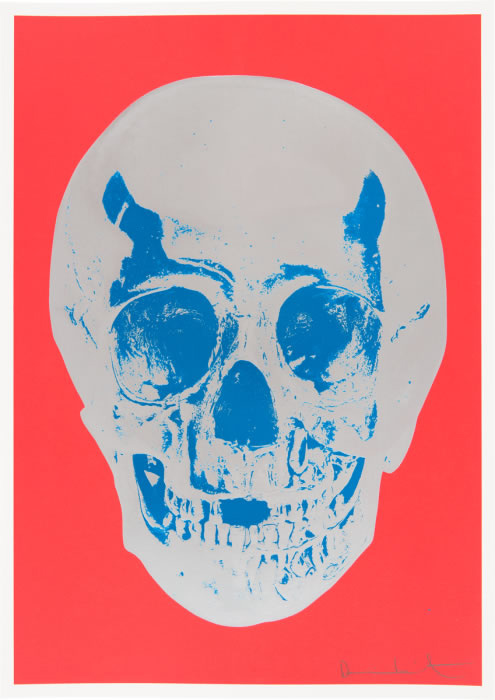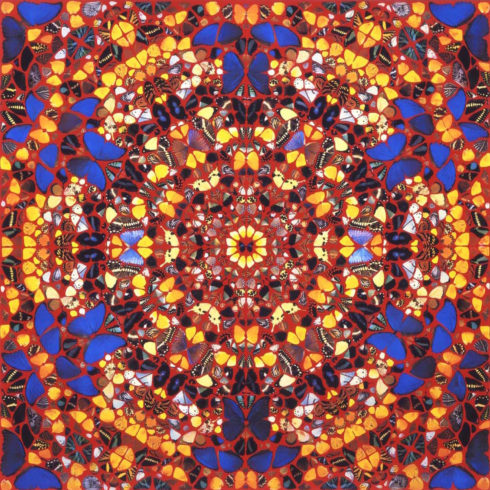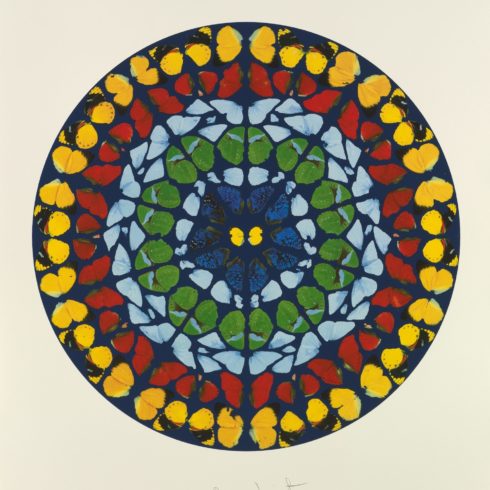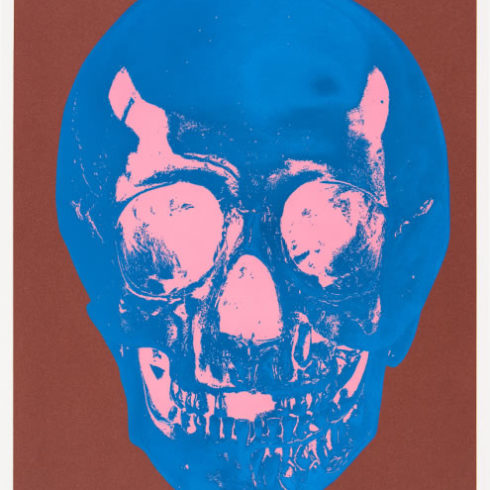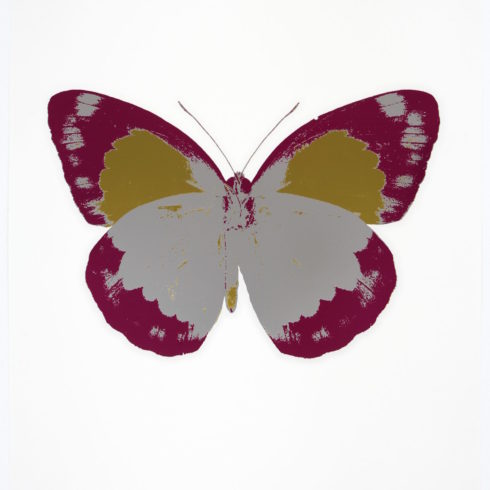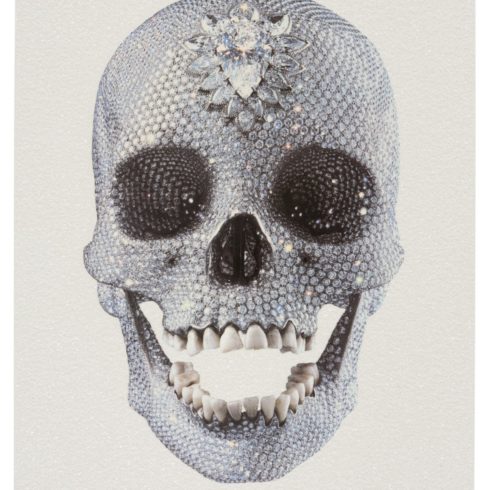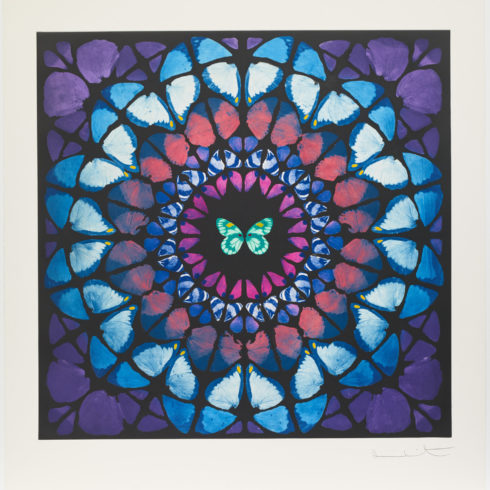Damien Hirst – Till Death Do Us Part (Red/Silver/Blue)
Damien Hirst, Till Death Do Us Part – Coral Red Silver Gloss True Blue Skull, is a silkscreen with glaze and foilblock on 410GSM somerset satin paper from the original suite of 10 colors made in 2012. This original silkscreen print is signed and numbered recto from the limited edition of 50. It is beautifully framed in a metal frame designated by Damien Hirst himself.
| Title | Till Death Do Us Part (Red/Silver/Blue) |
|---|---|
| Medium | Silkscreen |
| Year | 2012 |
| Edition | 50 |
| Signature | Signed, numbered |
| Size | 20.5 x 14.5 (in) 52 x 37 (cm) |
| Price | SOLD |
Description
Damien Hirst, Till Death Do Us Part – Coral Red Silver Gloss True Blue Skull, is a silkscreen with glaze and foilblock on 410GSM somerset satin paper from the original suite of 10 colors made in 2012. This original silkscreen print is signed and numbered recto from the limited edition of 50. It is beautifully framed in a metal frame designated by Damien Hirst himself.
Damien Hirst was born in 1965 in Bristol and grew up in Leeds. In 1984 he moved to London, where he worked in construction before studying for a BA in Fine Art at Goldsmiths college from 1986 to 1989. He was awarded the Turner Prize in 1995.
Since the late 1980’s, Hirst has used a varied practise of installation, sculpture, painting and drawing to explore the complex relationship between art, life and death. Explaining: “Art’s about life and it can’t really be about anything else … there isn’t anything else,” Hirst’s work investigates and challenges contemporary belief systems, and dissects the tensions and uncertainties at the heart of human experience.[1]
Hirst developed his interest in exploring the “unacceptable idea” of death as a teenager in Leeds. From the age of sixteen, he made regular visits to the anatomy department of Leeds Medical School in order to make life drawings (‘With Dead Head’ (1991)). The experiences served to establish the difficulties he perceived in reconciling the idea of death in life. Of the prominence of death in his work (‘A Thousand Years’(1990)) he has explained: “You can frighten people with death or an idea of their own mortality, or it can actually give them vigour.”[2]
At Goldsmiths, Hirst’s understanding of the distinction between painting and sculpture changed significantly, and he began work on some of his most important series. The ‘Medicine Cabinets’ created in his second year combined the aesthetics of minimalism with Hirst’s observation that, “science is the new religion for many people. It’s as simple and as complicated as that really.”[3]This is one of his most enduring themes, and was most powerfully manifested in the installation work, ‘Pharmacy’ (1992).
Whilst in his second year, Hirst conceived and curated ‘Freeze’ – a group exhibition in three phases. The exhibition of Goldsmiths students is commonly acknowledged to have been the launching point not only for Hirst, but for a generation of British artists. For its final phase he painted two series of coloured spots on to the warehouse walls. Hirst describes the spot paintingsas a means of “pinning down the joy of colour”, and explains they provided a solution to all problems he’d previously had with colour. It has become one of the artist’s most prolific and recognisable series, and in January 2012 the works were exhibited in a show of unprecedented scale across eleven Gagosian Gallerylocations worldwide.[4]
Additional information
| Title | Till Death Do Us Part (Red/Silver/Blue) |
|---|---|
| Medium | Silkscreen |
| Year | 2012 |
| Edition | 50 |
| Signature | Signed, numbered |
| Size | 20.5 x 14.5 (in) 52 x 37 (cm) |
| Price | SOLD |
← Damien Hirst – Till Death Do Us Part (Grey/Green)
Joan Miro – Et L’Oiseau S’Enfuit Vers Les Pyramides →


